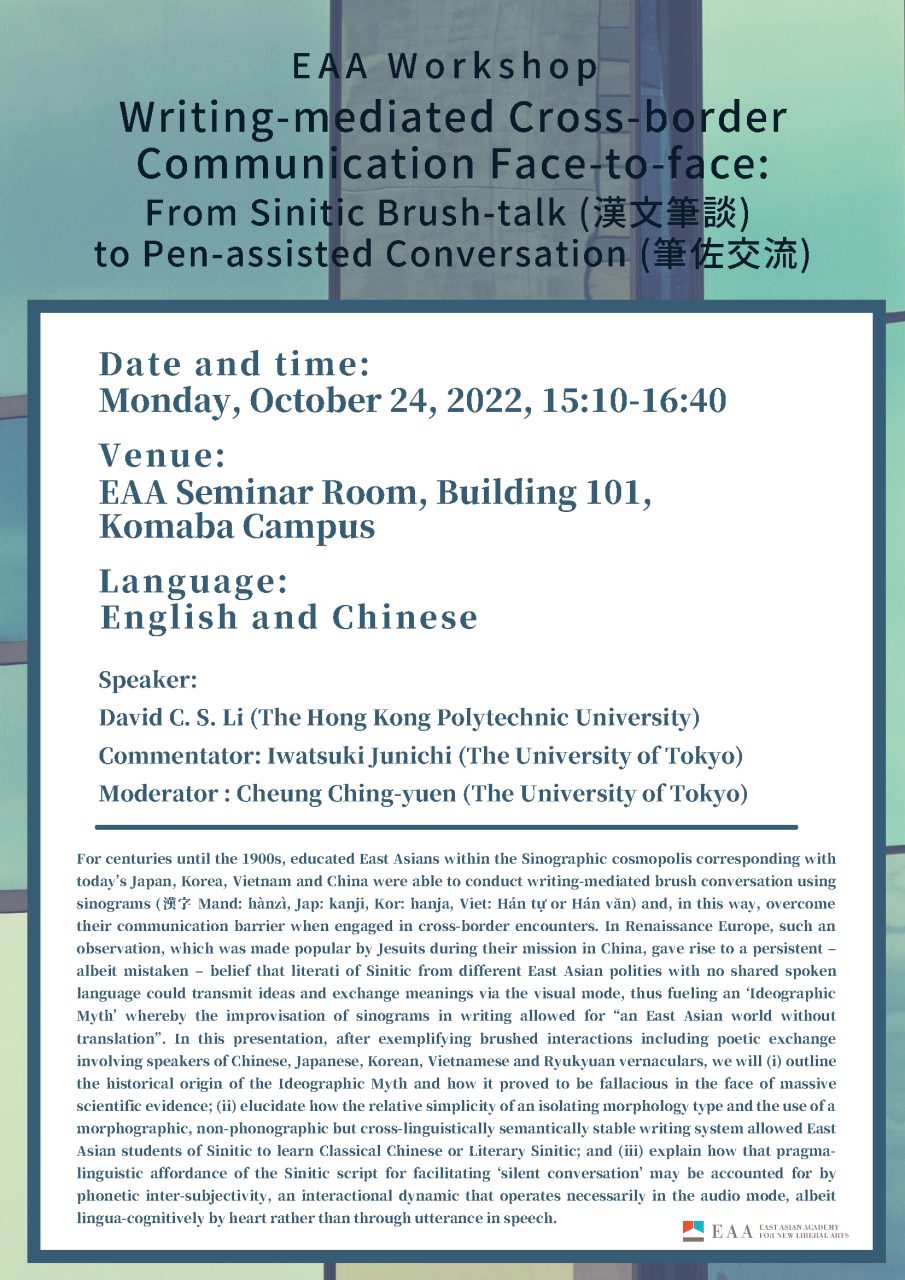Date and time: 24.10.2022 15:10~16:40
Venue: EAA Seminar Room, Building 101, Komaba Campus
Language: English and Chinese
Abstract:
For centuries until the 1900s, educated East Asians within the Sinographic cosmopolis corresponding with today’s Japan, Korea, Vietnam and China were able to conduct writing-mediated brush conversation using sinograms (漢字 Mand: hànzì, Jap: kanji, Kor: hanja, Viet: Hán tự or Hán văn) and, in this way, overcome their communication barrier when engaged in cross-border encounters. In Renaissance Europe, such an observation, which was made popular by Jesuits during their mission in China, gave rise to a persistent – albeit mistaken – belief that literati of Sinitic from different East Asian polities with no shared spoken language could transmit ideas and exchange meanings via the visual mode, thus fueling an ‘Ideographic Myth’ whereby the improvisation of sinograms in writing allowed for “an East Asian world without translation”. In this presentation, after exemplifying brushed interactions including poetic exchange involving speakers of Chinese, Japanese, Korean, Vietnamese and Ryukyuan vernaculars, we will (i) outline the historical origin of the Ideographic Myth and how it proved to be fallacious in the face of massive scientific evidence; (ii) elucidate how the relative simplicity of an isolating morphology type and the use of a morphographic, non-phonographic but cross-linguistically semantically stable writing system allowed East Asian students of Sinitic to learn Classical Chinese or Literary Sinitic; and (iii) explain how that pragma-linguistic affordance of the Sinitic script for facilitating ‘silent conversation’ may be accounted for by phonetic inter-subjectivity, an interactional dynamic that operates necessarily in the audio mode, albeit lingua-cognitively by heart rather than through utterance in speech.
Speaker:
David C. S. Li (The Hong Kong Polytechnic University)
Commentator:
Iwatsuki Junichi (The University of Tokyo)
Moderator:
Cheung Ching-yuen (The University of Tokyo)









